
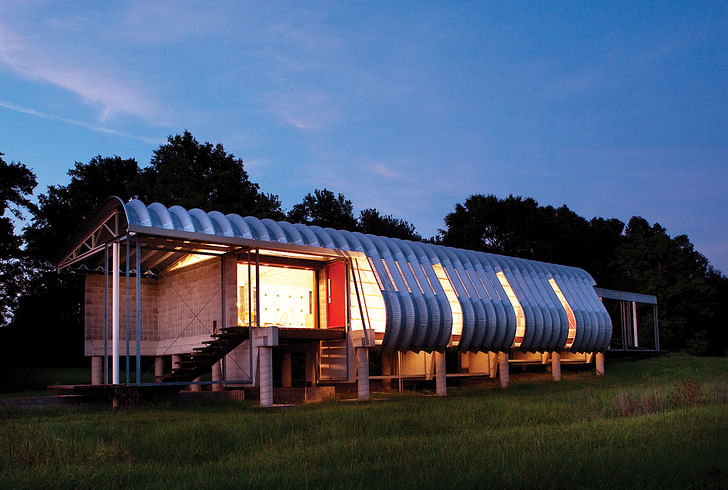
As conceptually oriented housing design goes, the Berard Residence has a bold aim: it attempts to shift the preconception of housing's elemental function away from shelter and into a more experiential mode, concerned with the qualities of human existence itself. Submitted to our open call under July's theme of Domesticity, the home aligns itself with a new interpretation of the 'case study' ideal.
The Berard Residence was designed by owner and current inhabitant Joel Breaux, but it was originally built for (and named after) Breaux's grandmother, Desia Berard. The home deemphasizes cosmetic concerns in favor of a focus on experience, which the design team defined in four basic questions: “What do I see? How does this feel? Am I confined or comforted? At what pace does the outside world ebb and flow?” The result is a house that, measuring the permanent against the fleetingwhile not completely lacking in cosmetic choices, certainly limits the number to a bare minimum. Color, for example, is rarely refined or cultivated; the materials that make up the structural elements, aside from the red front door, are essentially displayed in their raw form. Utility is also displayed, even integrated into the design: as the team notes, "If during building assembly a tool is needed for lifting, then the tool remains as part of the building." This utility extends to the foundations: located in Iberia Parish, Louisiana, the house was built eight feet above ground to avoid flooding in the region.

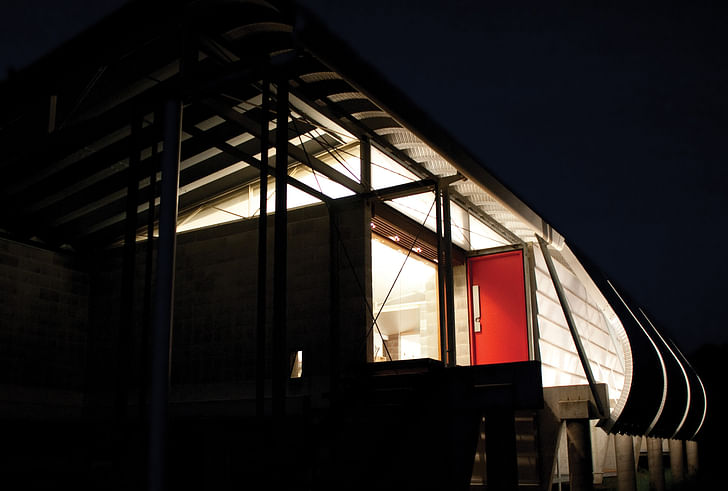
So how does the house transcend its role as shelter and engage its inhabitants on the experiential level? There are two principal methods by which the team attempts to create this effect: temporal performance, and spatial experience. Temporal performance is defined as how the house interacts with changing environmental conditions like rainfall, sunlight, and gravity. The effect of each of these conditions is measured in increments ranging from seconds to decades: the effect of darkness is measured in nights, while the solstice is measured in seasons.
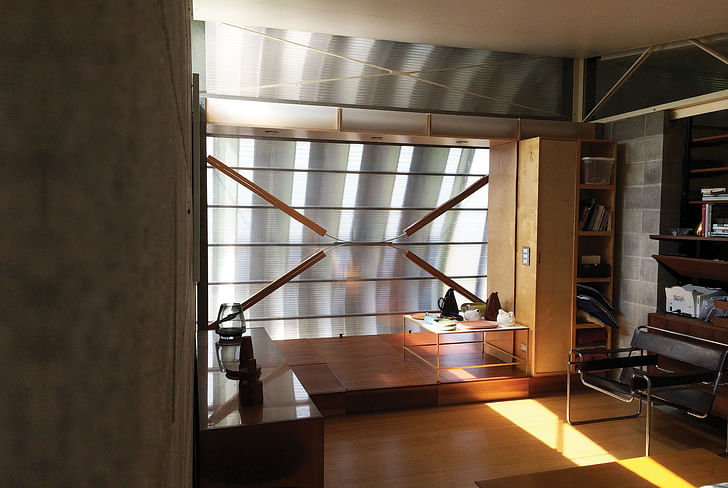
The spatial experience, meanwhile, plays with notions of measuring the permanent against the fleeting. A polycarbonate hallway features both natural and artificial lighting, which creates a different visual perception of the structural environment: by day, the hallway appears to terminate at the polycarbonate surface, but by night appears to extend to the exterior corrugated facade. The interior space features a contrast between the solid, immobile elements of poured concrete beams and the flexible, fabricated aluminum faced SIP modular flooring and ceiling panels.
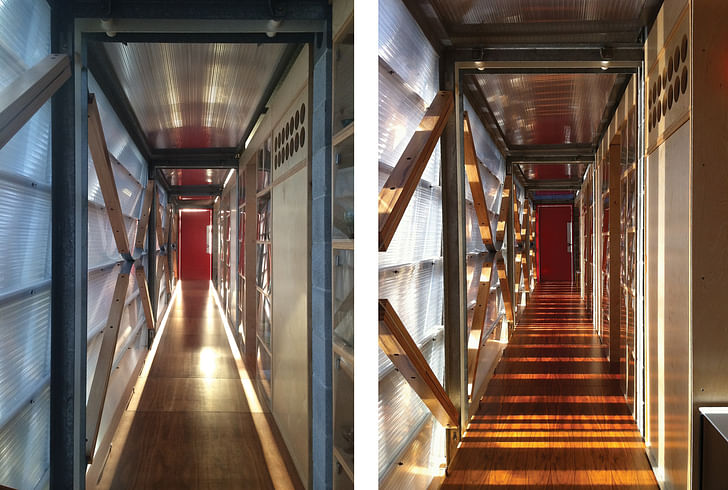
Both the temporal performance and spatial experience markers are designed to more fully connect the inhabitants to their physical environment. In terms of the actual composition of the house itself, according to the team the design draws on three principal archetypes for its aesthetic and structural inspiration: agricultural buildings, oilfield structures, and the Cajun/Creole camps of south Louisiana. These three typologies form a blend of cultural, infrastructural, and economic considerations, creating a house that is holistically reflective of its site and environment. Conceptually, the Berard Residence is firmly embedded in observation instead of aesthetics, thus becoming a case study in forced existential contemplation.
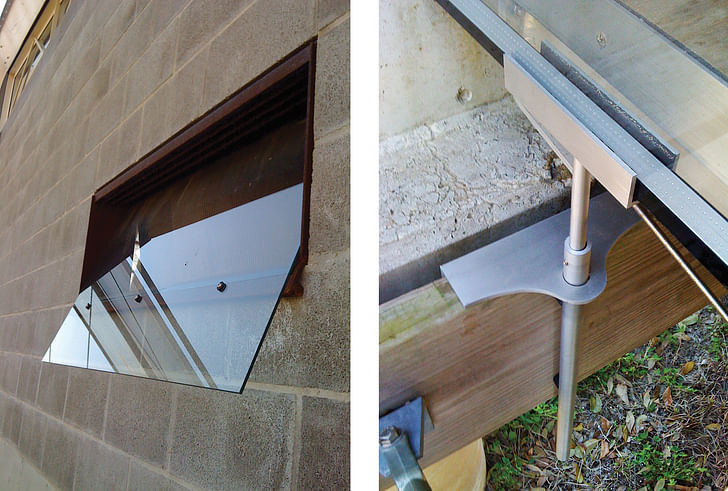
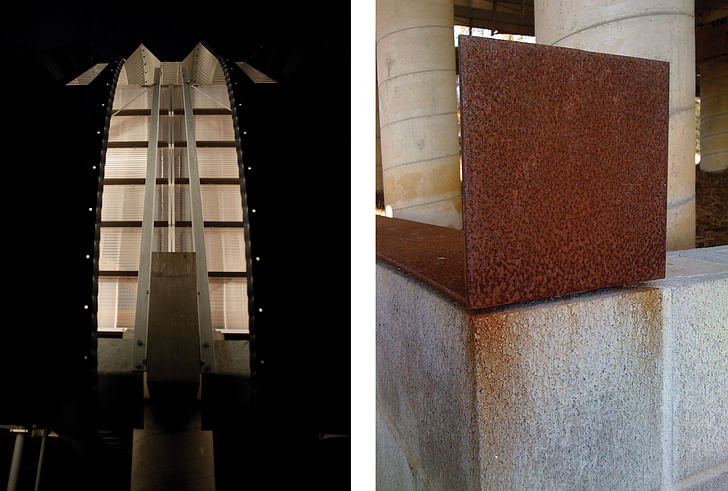
Project Team
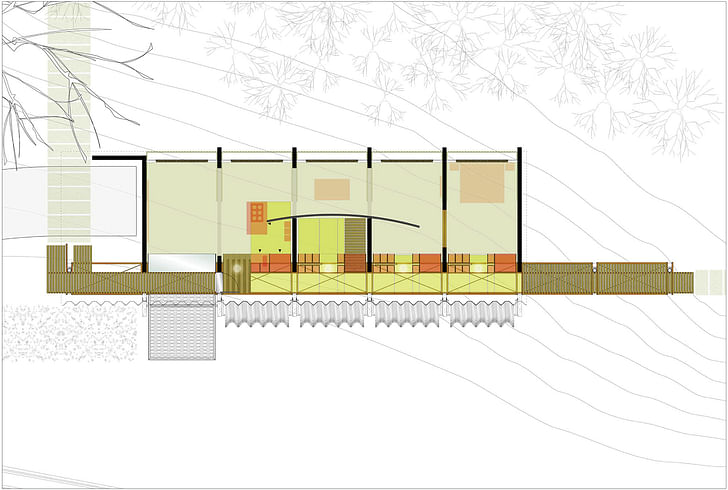
This feature was submitted to our July open call for projects that envision new forms of Domesticity. This August, Archinect's coverage includes a special thematic focus on Games.
Julia Ingalls is primarily an essayist. Her work has appeared or is forthcoming in Slate, Salon, Dwell, Guernica, The LA Weekly, The Nervous Breakdown, Forth, Trop, and 89.9 KCRW. She's into it.
No Comments
Block this user
Are you sure you want to block this user and hide all related comments throughout the site?
Archinect
This is your first comment on Archinect. Your comment will be visible once approved.